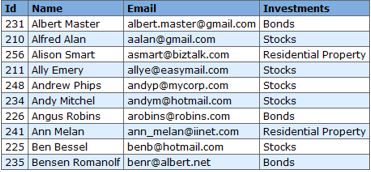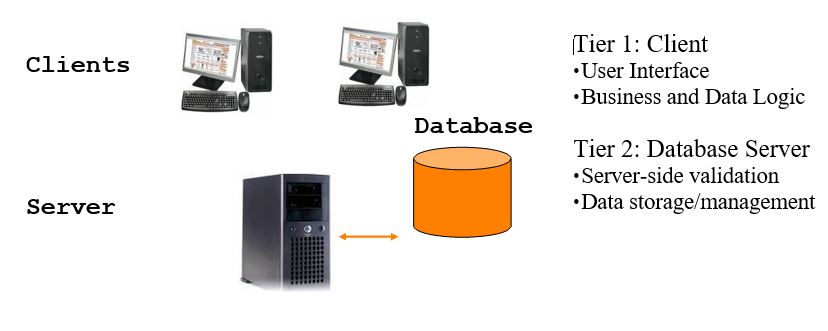Introduction to Database Systems
Database Systems can be easily described as a structured set of data stored in a computer that may be accessed in a variety of ways
Now lets take a look at some definitions
Data
Data is a collection of raw facts and figures.
It can also be said as a stored representation of objects and events that have meaning and importance in the user environment. For example: Fall of wickets, 4 8 15 48 7 83 75 27, jane, orange, sam, jill, cartoons, 5’10’’
Information
It is the processed form of data. Data can be processed in two ways, structure and additional data. Data can be summarized in different ways well, for instance, diagrams and charts etc

Database
An organized collection of logically related data can be referred to as Databases

Meta Data
Meta Data describes the properties and characteristic of data

Database Management Systems
“It is a software that is used to create, maintain and manages databases and also provide controlled access to users”.
Examples: Oracle, SQL Server, MySQL, MS Access
A database is the data stored and a database system is the software that manages the data.
DBMS controls the organization, storage, management and retrieval of data in a database .
Data Models
A conceptual view of the database which captures the nature of data and relations among data .
Entities
A person, place, object, event or concept in the user/business environment for which information must be recorded
Relationships
How different entities are interacting with one another
Importance of Database Systems
By using a DBMS there is a central repository of shared data and data is managed by a controlling agent. the data is stored in convenient and standard form which is not only easy to store but also quite simple to manipulate and retrieve

Advantages of Database Approach
There will be program -Data Independence. Metadata will be stored in DBMS, so applications don’t need to worry about data formats. Another advantage that databases come with is data queries or updates managed by DBMS so programs don’t need to process data access routines. Databases also provide increased application development and maintenance productivity
Databases give minimal data redundancy which leads to increased data integrity/consistency. Some other advantages of Database Approach is that there is improved data sharing, different users get different views of data. Standards are enforced that is, all data accessing is dome in the same way. Data quality is improved. Accessibility and Responsiveness of data is also enhanced by the use of Standard Query Language (SQL). Disaster recovery is much easier which means better security and back up
Costs and Risks of the Database
Database systems do not come with major risks. Some problems that could arise are Installation and Management Cost and complexity. It also requires new and specialized personnel, this is a need for explicit backup and recovery
Data Definition Language (DDL)
The database management system (DBMS) takes the data description and handles the low-level specifics of how to store, retrieve, and manage concurrent access to it. A Data Definition Language is used to describe the database to the database management system (DDL). The DDL enables users to construct data structures in the database’s data model. A data model is a set of concepts that may be used to explain a database’s structure.
In the relational model, data is represented as tables and fields. Examples: relational model, XML, graphs, object-oriented
Schema
A DDL is used by a database designer to define the database’s schema. The system catalogue is used to keep track of the schema. One form of metadata is the schema. A schema is a description of the database’s structure. Structures, names, and kinds of data are all recorded in a schema. The data model for Access, for example, is a relational model.
A relational model contains tables and fields as its model constructs. The following DDL creates a product table:
CREATE TABLE product(
sku as VARCHAR(10) NOT NULL,
name as VARCHAR(40),
desc as VARCHAR(50),
inventory as INTEGER,
PRIMARY KEY (sku));
Data Manipulation Language (DML)
The user accesses data using a Data Manipulation Language once a database has been built using DDL (DML). SQL is the standard DML. Data may be inserted, modified, retrieved, and deleted using the DML. Because user queries are given using data names rather than their physical representation, a DML enables data abstraction.
For example, in a file system with three fields, you must provide the field’s exact placement in the file. You’d just have to specify it by name in a database.
Because the DBMS includes all of the code for accessing the data, the applications no longer need to be concerned with such specifics.
SQL Examples
Retrieve all pro ducts in the data base:
SELECT sku, name, desc, inventory FROM product;
Retrieve all pro ducts where inventory < 10:
SELECT name, inventory FROM product WHERE inventory < 10;
Insert a new pro duct into the database:
INSERT INTO product VALUES (‘1234′,’Soap’,’Ivory’,100);
Delete a product from the database:
DELETE FROM product WHERE sku = ‘1234’;
Database Architecture
There are numerous database architectures to choose from:
File-server (embedded) architecture
Although files are shared, DBMS processing takes place at the clients (e.g. Microsoft Access or SQLite)
Two-Tier client-server architecture
Clients connect to a dedicated computer that runs a database management system (e.g. SQL Server)
Three- Tier client-server architecture
The lowest tier is a database management system (DBMS), the second tier is an application server that contains business logic, and the top layer is clients (e.g., Web browser-Apache/Tomcat-Oracle).

You might also like: Security Threats to the user

